Solar eclipse of July 1, 2011
| Solar eclipse of July 1, 2011 | |
|---|---|
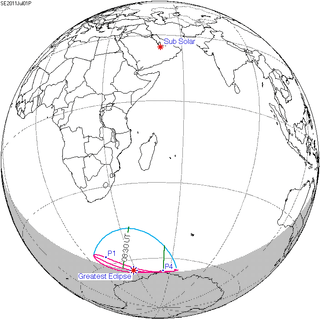 Map | |
| Type of eclipse | |
| Nature | Partial |
| Gamma | -1.4917 |
| Magnitude | 0.0971 |
| Maximum eclipse | |
| Coordinates | 65°12′S 28°36′E / 65.2°S 28.6°E |
| Times (UTC) | |
| (P1) Partial begin | 7:53:47 |
| Greatest eclipse | 8:39:30 |
| (P4) Partial end | 9:22:45 |
| References | |
| Saros | 156 (1 of 69) |
| Catalog # (SE5000) | 9533 |
A partial solar eclipse occurred on July 1, 2011. A solar eclipse occurs when the Moon passes between Earth and the Sun, thereby totally or partly obscuring the image of the Sun for a viewer on Earth. A partial solar eclipse occurs in the polar regions of the Earth when the center of the Moon's shadow misses the Earth. This is the first solar eclipse of saros series 156, only visible as a partial solar eclipse in a small area south of South Africa and north of Antarctica. At greatest eclipse, the magnitude is just 0.097.[1] It is the first new saros series to begin since saros 155 began with the partial solar eclipse of June 17, 1928.[2]
This eclipse is the third of four partial solar eclipses in 2011, with the others occurring on January 4, 2011, June 1, 2011 and November 25, 2011.
Images

Animated path
Related eclipses
Solar eclipses 2008–2011
Each member in a semester series of solar eclipses repeats approximately every 177 days and 4 hours (a semester) at alternating nodes of the Moon's orbit.
| Solar eclipse series sets from 2008–2011 | ||||
|---|---|---|---|---|
| Ascending node | Descending node | |||
| Saros | Map | Saros | Map | |
121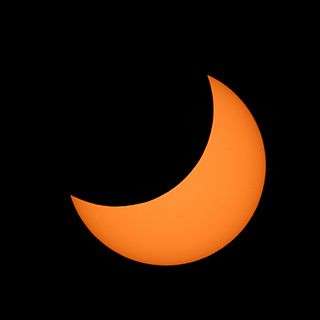 Partial from Christchurch |
2008 February 7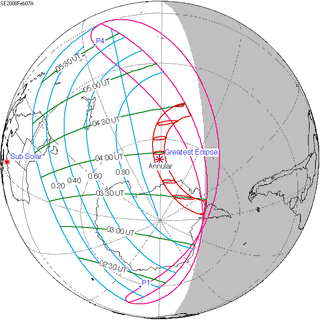 Annular |
126 Novosibirsk, Russia |
2008 August 1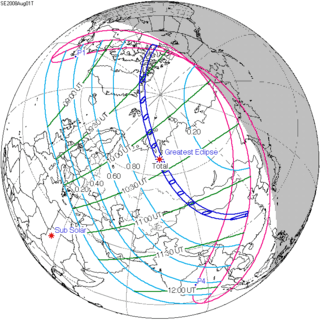 Total | |
131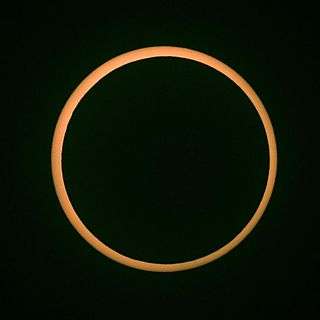 Bandar Lampung, Indonesia |
2009 January 26 Annular |
136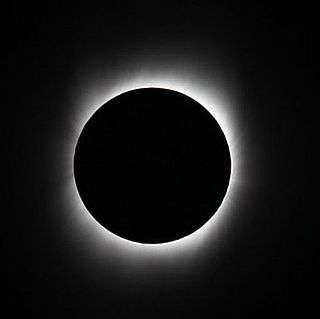 Kurigram, Bangladesh |
2009 July 22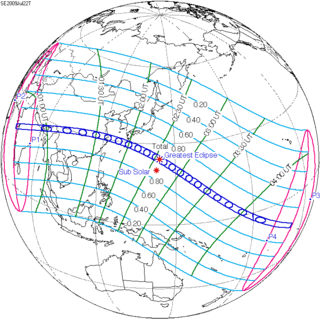 Total | |
| 141 Bangui, Central African Republic |
2010 January 15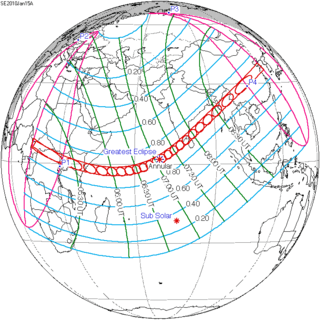 Annular |
146 Hao, French Polynesia |
2010 July 11 Total | |
151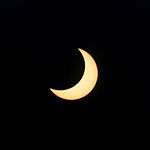 Partial from Vienna, Austria |
2011 January 4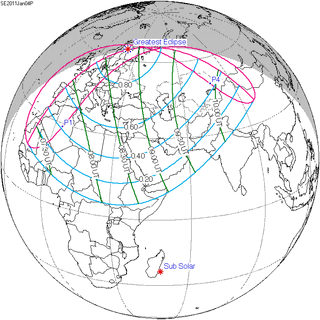 Partial (north) |
156 | 2011 July 1 Partial (south) | |
| Partial solar eclipses on June 1, 2011, and November 25, 2011, occur on the next lunar year eclipse set. | ||||
Metonic series
The metonic series repeats eclipses every 19 years (6939.69 days), lasting about 5 cycles. Eclipses occur in nearly the same calendar date. In addition the octon subseries repeats 1/5 of that or every 3.8 years (1387.94 days).
| 22 eclipse events between September 12, 1931 and July 1, 2011. | ||||
|---|---|---|---|---|
| September 11-12 | June 30-July 1 | April 18-19 | February 4-5 | November 22-23 |
| 114 | 116 | 118 | 120 | 122 |
 September 12, 1931 |
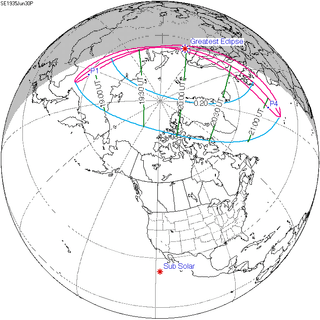 June 30, 1935 |
 April 19, 1939 |
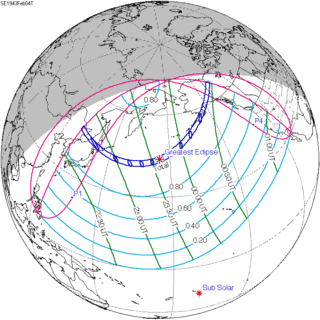 February 4, 1943 |
 November 23, 1946 |
| 124 | 126 | 128 | 130 | 132 |
 September 12, 1950 |
 June 30, 1954 |
 April 19, 1958 |
 February 5, 1962 |
 November 23, 1965 |
| 134 | 136 | 138 | 140 | 142 |
 September 11, 1969 |
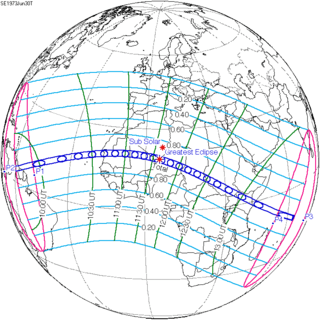 June 30, 1973 |
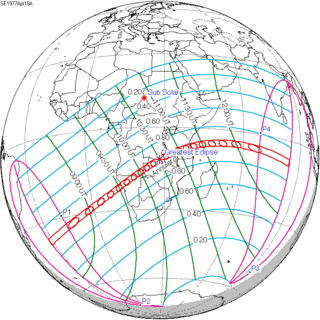 April 18, 1977 |
 February 4, 1981 |
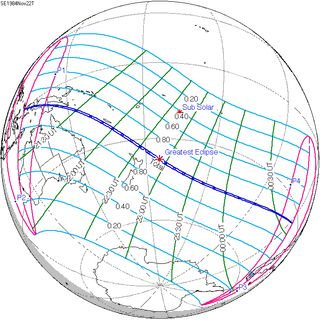 November 22, 1984 |
| 144 | 146 | 148 | 150 | 152 |
 September 11, 1988 |
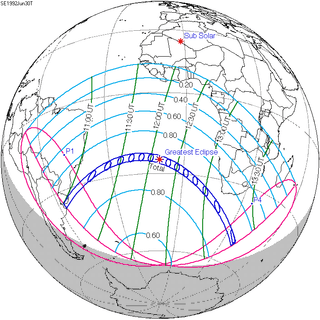 June 30, 1992 |
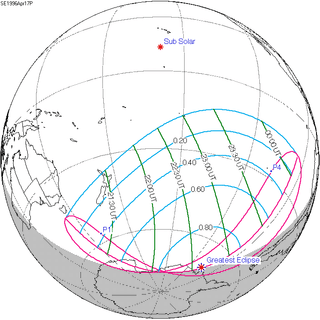 April 17, 1996 |
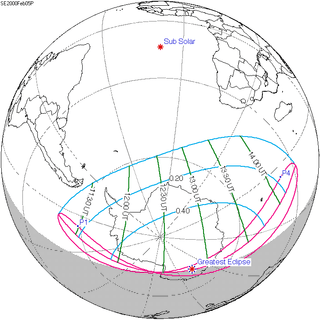 February 5, 2000 |
 November 23, 2003 |
| 154 | 156 | |||
 September 11, 2007 |
 July 1, 2011 | |||
References
External links
| Wikimedia Commons has media related to Solar eclipse of 2011 July 1. |
